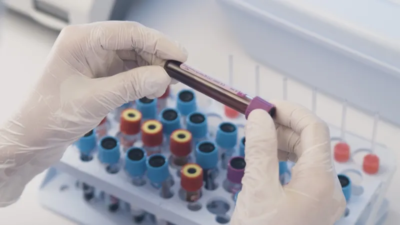Is Hair Loss Really Reversible? 5 Options to Consider

It’s easy to take a thick, healthy head of hair for granted until you start to go bald. Thinning hair can impact your self-confidence and make you feel less attractive. You may have a long line of bald ancestors or you might be the first in your family to lose your locks. But no matter what your situation may be, you don’t have to throw up your hands and accept your fate.
Balding may be permanent for some people. But for others, it can be completely or partially reversed if you take quick action. From hair transplants to supplementation, here are five treatments that could potentially reverse your hair loss.
1. Hair Transplants
You don’t have to don a toupee to restore fullness to the top of your scalp. There are highly effective hair restoration methods that restore volume to thinning areas using your natural hair. A hair transplant is a procedure that involves transporting healthy follicles from one area of the head to another. If you’re envisioning the obvious hair plugs of years past, don’t worry. Modern hair transplants are much more subtle and effective than their earlier counterparts.
You have multiple options when it comes to hair transplants, but follicular unit extraction (FUE) may be the least invasive. It offers permanent hair regrowth with minimal risk of side effects and little to no visible scarring. During this procedure, a surgeon painstakingly removes individual hair follicles from the back of the head. Each surgically removed follicle is then placed strategically in areas impacted by hair loss. Over time, the transplanted hair follicles begin to grow and restore volume to balding areas.
2. Hair Loss Medication
There is a medication for practically every condition under the sun, and balding is no exception. There are several different medications available to treat thinning hair, but minoxidil and finasteride are two of the most popular. These medications are FDA-approved for hair loss and come in both topical and oral forms. They show impressive efficacy when used as instructed.
Finasteride is only FDA-approved for male pattern hair loss. However, it is occasionally used off-label to treat hair loss in females. That said, experts don’t typically recommend finasteride as the initial go-to option for women. Premenopausal females who take this medication should exercise caution because it is known to cause birth defects in babies. Finasteride is also linked to depression, fatigue, weight gain, and other unwanted symptoms in women.
3. Laser Light Therapy
Low-level laser light therapy often helps stop hair loss from occurring and promotes new hair growth. Research suggests that laser light therapy can help treat hair loss in both men and women. It works by stimulating the hair follicles in the resting phase of the hair cycle (also known as telogen). When stimulation occurs during this phase, it preps the hair for optimal growth during the anagen phase of the hair cycle.
People with androgenic alopecia may experience the most notable results from laser light therapy. Due to its ability to target the hormonal factors contributing to this specific type of hair loss, it may work when other treatments don’t. LLLT offers a non-invasive alternative that can be used in conjunction with other therapies. Laser light therapy is considered a safe option with minimal risk of adverse effects. Side effects of laser light therapy may include acne, headaches, itchy skin, and discomfort in the treated area.
4. Platelet-Rich Plasma Injections
You may be surprised to learn that your own blood can potentially boost hair growth and reverse baldness. Human blood contains four primary components: white blood cells, red blood cells, platelets, and plasma. Platelets promote cell regeneration and growth, which is why they are so helpful for combatting hair loss. Platelet-rich plasma contains around five times more platelets than regular blood.
The theory behind platelet-rich plasma injections is that they can stimulate certain hair follicle cells to regrow hair. These injections can cost up to $1,500 per treatment. Most people receive monthly injections for several months as part of their initial treatment. Patients may also require multiple follow-up treatments each year to maintain results. Some people respond well to this treatment, though more research needs to be done to establish its general effectiveness.
5. Hair Supplements
Supplements may help restore hair volume for some people. It can be hard to figure out which supplements work for you. Sifting through dozens of available supplements and finding one that’s effective may require trial and error. This process could span over months or even years. However, those who do find supplements that effectively reverse hair loss often feel that the process of trial and error is worth it.
Biotin, vitamin D, vitamin B12, and zinc may all help treat various types of hair thinning. Telogen effluvium, alopecia areata, and androgenetic alopecia may all be linked to deficiencies in micronutrients. If you have hair loss from any of these conditions, your hair follicles may respond positively to a high-quality multivitamin. Though it may sound too good to be true, hair loss can be reversible in some cases. Consider trying one or more of the above treatment options to see if your hair loss subsides. Keep in mind that no treatment is effective right away. Therefore, you should plan to try the above treatments for a few weeks or months to test their effectiveness for your hair loss woes.
Research Snipers is currently covering all technology news including Google, Apple, Android, Xiaomi, Huawei, Samsung News, and More. Research Snipers has decade of experience in breaking technology news, covering latest trends in tech news, and recent developments.












